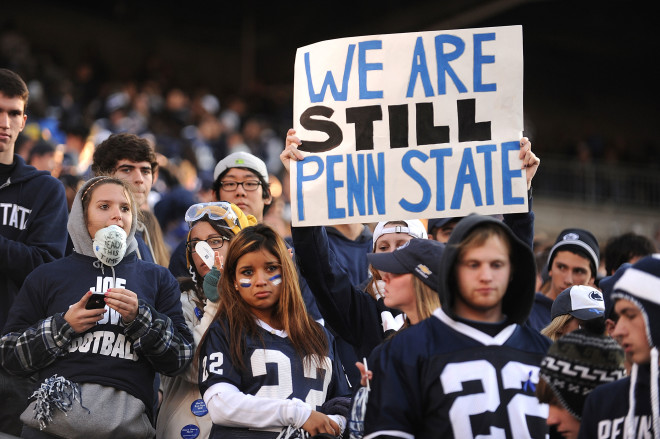Stop Comparing Atrocities
I’m usually the first to complain (smugly, I’ll admit) about how much the mainstream media fixates on crime stories. By the same token, I don’t like when preachy journalists denounce the media for covering crime stories, thereby covering that same crime story even more. Either way, I promised myself I wouldn’t write about the Penn State scandal, but here we go.
By now we’ve all heard the jarring allegations and seen the subsequent media blitz. I’ve reached my boiling point here. This time, I’m not bothered by the extent to which a crime story has been covered. Rather, what bothers me now is that some commentators seek to compare some part of the Penn State scandal with another historical atrocity. Unfortunately, this trope is all too familiar in today’s media coverage of crime and violence.
Where does that get us? Why do we foolishly try to compare a crime to other crimes?
Take David Brooks’ recent op-ed regarding assistant coach Mike McQueary’s failure to intervene upon witnessing Jerry Sandusky allegedly raping a 10-year-old boy in the Penn State locker room showers in 2002. Brooks argues that none of us really knows what we would do in that same situation. It is easy for us to judge McQueary and now ex-head coach Joe Paterno (who also only reported the offense to his superiors instead of contacting the police) when we might actually behave in the same manner.
That’s a fair point. However, Brooks then takes it one step further, likening McQueary’s failure to act with the complacent bystanders of the Holocaust or the Rwandan genocide.
Now there’s the rub. While I disagree with his central argument (I think McQueary and Paterno’s inaction is morally reprehensible, if not criminal), I can recognize the point he is making. But the comparison with historical genocide? Why is our national conversation about crime and violence rife with analogy? We need to stop ranking, comparing, and juxtaposing atrocities. Logically, it’s not a worthwhile task, not to mention I find it rather repugnant.
It is, perhaps, understandable why we do this. It’s hard to wrap your mind around real violence. We package crime into neatly reasoned syllogisms as a societal coping mechanism. We must resist the urge to do this because it doesn’t get us any closer to understanding what cannot be understood. Likening Casey Anthony to O.J. Simpson won’t bring clarity. Comparing the Tuscon attack to the Norway bombing won’t bring the victims back. It may make for a flashy headline or meme, but violence is too irrational for these tidy parallels.
Trying to understand horrific violence, like in the Penn State case, is a frustrating exercise in futility. As a society in the wake of tragedy, we must stop trying to comprehend the incomprehensible. Reflection, in the media or elsewhere, needn’t always seek to completely understand.
And this is not another column about how high-profile crime should not be considered “news.” In its most basic definition, crime is a deviation from normalcy. Criminal action is behavior that is antithetical to what is considered legally normal. It’s not surprising then that crime is ubiquitous in TV, movies, and all other forms of mass media. Crime most interests those who find it inherently different from their daily lives (I doubt many registered sex offenders watch Law & Order: SVU). This “deviance” is also the very soul of news. Something that deviates from what you would expect is by its nature newsworthy. Naturally, crime has always had a special place in the history of American news.
And that doesn’t necessarily have to change. What should change, though, is the uncouthly comparative nature of crime journalism. Crime can be news, but let’s not try to rationalize high-profile crime by placing it side by side with other historical atrocities. It gets us nowhere.
Crazy stuff happens in this world, and the Penn State case is a horrific example of that. Sometimes, historical comparisons can help us understand the present. This is not one of those times.
